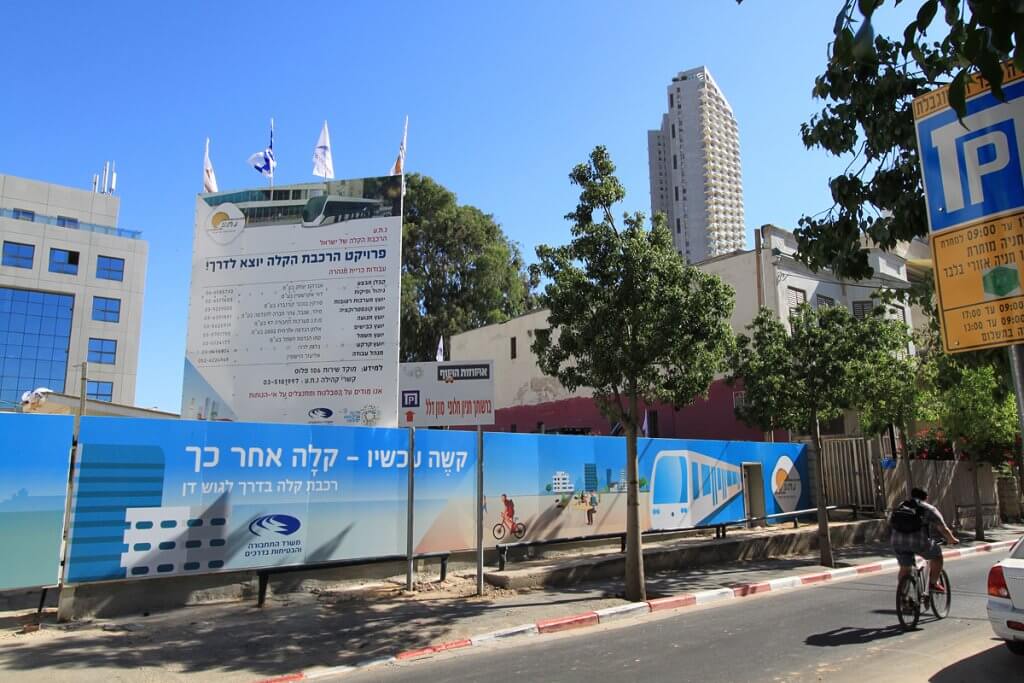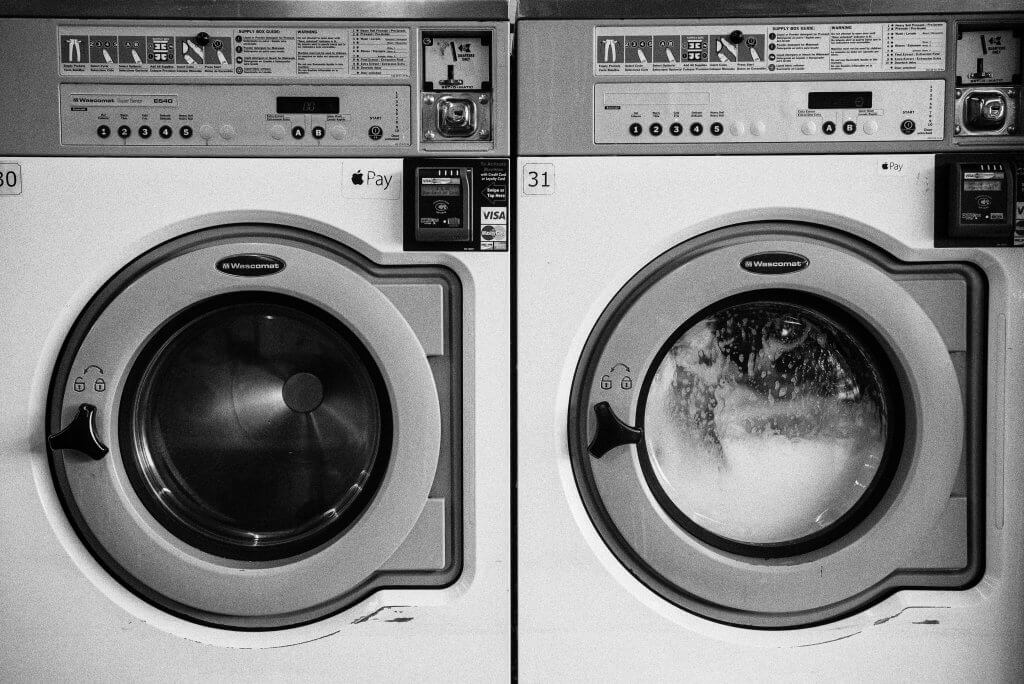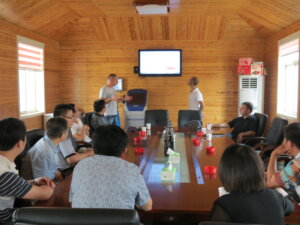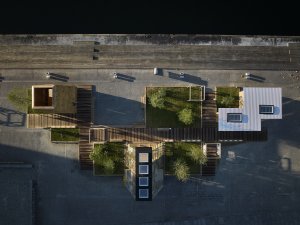Today (22 March) is the International Water Day. On the face of it, the water crisis in the Middle East is hardly noticeable in Israel. The reason for this is that unlike the neighboring countries, Israel has a significant desalination system that provides the water sector with over 600 million cubic meters annually, which is about 50 percent of Israel's freshwater consumption and 80 percent of domestic and industrial consumption.
אך גם כמות כזו של התפלה איננה מספקת לאחר שרצף של חמש שנים שחונות הביאו למצב חסר תקדים באזורים שונים בארץ, ובצפון ובכנרת בפרט. לפי הערכות השירות המטאורולוגי, באגן ההיקוות של הכנרת (הגולן, הגליל המזרחי ואזור הכנרת) ירדו כ-76 אחוזים מממוצע המשקעים הרב-שנתי, ונכון לתחילת מרץ 2018 מפלס הכנרת נמצא כ-56 סנטימטר מתחת לקו האדום התחתון. ולפי הערכות מתחילת החורף, מפלס הכנרת צפוי לרדת השנה לראשונה אל מתחת לקו השחור – שפל במפלס שנקבע בדצמבר 2001 – לרמה שטרם נראתה מאז החלו המדידות. לצד זאת, נשקלת החייאה של קמפיין ה"ישראל מתייבשת", שהצליח בזמנו להוריד את צריכת המים הביתית באופן ניכר.
בעוד שמצב מקורות המים חמור, ניסיונות של גורמים פרטיים לאשר שימוש במקורות מים חלופיים נתקלים בסירוב עיקש מצד הרשויות, בראשן משרד הבריאות. האם לאור החשש שמתקני המים הקיימים לא יעמדו בביקוש, לא הגיע הזמן שהרשויות יגמישו את הקריטריונים?

30 מיליון קוב מים בקו האדום
בימים אלה נבנה במטרופולין תל אביב הקו האדום, הסנונית הראשונה של מערכת הסעת ההמונים שעתידה לרשת את אזור המרכז בארבעה קווים של רכבת קלה ושלושה קווי מטרו. "קשה עכשיו – הקלה אחר כך", זו הסיסמה שמלווה את העבודות, שגורמות כיום לכאוס תחבורתי באזור הבנייה של התחנות, אך צפויות לשדרג את מערך התחבורה הציבורית בלב המטרופולין.
נותרו עוד שלוש שנים ארוכות עד להשלמת הקו הראשון, הקו האדום, שאורכו 24 ק"מ, מתוכם 12 ק"מ תת קרקעיים. כיום העבודות מתרכזות במנהור, ובנייה של התחנות התת-קרקעיות – עשר במספר. על חפירת המנהרות מופקדות שמונה מכונות מסוג TBM שהן מעין מפעל תת-קרקעי נייד שחופר, מפנה ומדפן את קירות המנהרה, כל זאת בקצב ממוצע של 10 מטרים ליום. עד היום הושלמו 10 מתוך 24 הקילומטר (לכל אחת משתי המסילות מנהרה נפרדת). אך בעוד שמכונות החפירה עובדות בשיא המרץ, הבנייה של התחנות התת-קרקעיות מתעכבת, והסיבה לעיכוב היא הקושי לבנות בעומק הקרקע, בתוך מי התהום.
בנייה של התחנות התת-קרקעיות מצריכה לחפור לעומקים של עשרות מטרים, ומכיוון ומדובר באתרים שסמוכים לחוף, כלומר – שעומק מי התהום בהם הוא רדוד, המים מופיעים מהר מאוד בבור החפירה והופכים את העבודות לבלתי אפשריות. לאור הקושי הזה, החליטו בחברת נת"ע, שאחראית על ביצוע העבודות, לבחור בחלופה של השפלת מי תהום- שיטה שבה שאיבה של מים מבוצעת בסביבת אתר הבנייה, מה שגורם באופן זמני לירידת מפלס מי התהום. ככל שרוצים להוריד את המים נמוך יותר, נדרשות יותר משאבות וקצבי שאיבה גבוהים יותר. לא מדובר בשיטה חדשה שייחודית לפרויקט הרכבת הקלה – שאיבה של מי התהום מבוצעת באתרים רבים כמו מגדלי מגורים בעלי קומות מרתף.
According to Nir Kugel, deputy director of planning at NTA, which was presented last week at the annual meeting of the Israel Water Association, this is a massive pumping estimated at 30 million cubic meters on the Red Line alone, which is about 60 percent מצריכת המים השנתית של תאגיד מי אביבים. לשאיבה של כמות כזו של מים יש השפעה על מי התהום, שכן בעוד שחלק מהמים הנשאבים מוחדרים בחזרה לאקוויפר (לעתודות המים שבתת-הקרקע), חלק גדול מהמים מנותבים לנחלים ולאתר השפד"ן, ובכך הם אובדים לאקוויפר. בנוסף להשפעה השלילית על האקוויפר, הצורך להיפטר מעודפי המים הוא בעל השפעה כלכלית על חברת נת"ע, שכן היא נדרשת לשלם אגרות כבדות על כל קוב שנשאב ואינו מוחזר.
In an effort to save costs, NTA wants to improve the groundwater resources and supply them to the local water corporation for the benefit of drinking water, at first the Arlozoroff and Shaul HaMelech stations, where the pumping capacity stands at 1,200 cubic meters per hour and the cumulative amount of 10 million cubic meters in all the works, Which has been encouraged by the Water Authority, has encountered opposition from the Ministry of Health, which fears that the quality of the water is not good enough for drinking water. If the results are positive, it is possible that this is a process that could add significant amounts to the water sector, which is currently being lost in the flow to the Shafdan, especially since light rail lines are planned to build 100 underground stations and a large number of structures Degradation of ground water.

Shafdan for every building
Another method of reducing domestic water consumption is the use of gray water. Gray water is water derived from washing machines, sinks and showers, which after a reliably simple purification process can be used for purposes that do not include direct contact with the water, such as washing toilets and irrigating gardens. According to the Coalition for Gray Water, the use of gray water for these operations can save about 30 percent of domestic water consumption. The establishment of gray water recycling systems is part of the trend of decentralization of wastewater treatment systems, and differs from the perception that was prevalent in recent years of concentrating treatment facilities at large central sites, such as the Shafdan plant, which is the center of several cities' wastewater.
The trend of decentralization of sewage treatment systems and their transfer to the level of the private home, the building or the neighborhood, is opposed by the Ministry of Health. The reason for this, which was presented in the annual property by David Weinberg, a national engineer for planning and effluents at the Health Ministry, is the ministry's inability to control the decentralized systems. When it comes to a limited number of sewer systems, control of the process, at least on the part of the Ministry of Health, is easier. Today the market is open and there is no control over all the facilities that have been established by private individuals. Only a legal regulation of the industry will ensure the safe use of technology.On the other hand, gray water supporters maintain that control of the facilities can be done in a manner similar to that in the elevator industry, ie, by an external authorized company that will conduct the inspection every few months.
The Ministry of Health said in response to NTA's use of water: "In October 2017, the Water Authority and the NTA Government asked the Ministry of Health to examine the reuse of desalinated water (water extracted during the excavation) after drinking, during the construction of the Arlozorov station, The Ministry of Water and Water, the Ministry of Water and Water, the Ministry of Water and Water, the Ministry of Water and Water and the Ministry of Water and Water.
Gray water, in addition to fats, salts and organic matter, also contains a high concentration of microorganisms that cause disease (bacteria, viruses, and protozoa) and therefore may endanger public health when they are touched.
- Multiple water systems can cause hybrid connections, between gray water systems and drinking water systems.
- Body contact with vegetation (such as grass) that was launched in water that was not enriched to the required extent (in the routine or during a malfunction in the treatment facility) and placing the hand in the mouth or contact with food.
- Direct contact with untreated gray water that flows into the environment during a malfunction.
- Eating vegetables that were launched in the garden in the gray water and were not washed properly.
- Transfer by animals that touched the gray water, whether by flies and cockroaches exposed to untreated water that flowed into the environment during a malfunction in the facility, or by pets.
- In addition, the use of gray water requires the establishment of gray water treatment facilities in the yards of the houses, which can cause various nuisances, including odor nuisances.
Israel is a small and crowded country. This characteristic led to the establishment of central sewage treatment systems under several principles:
- Removal of sewage from residential areas, treatment and disposal of them at a location far from the public, in order to prevent possible exposure of the public.
- Concentration of treatment of a small number of facilities that can be effectively monitored. Failures in small and local treatment facilities in Israel in the 1980s led the state to promote the establishment of large central treatment facilities located far from the public and maintained at a high professional level.
- Controlled use of effluents – Most of the effluents are used for agricultural irrigation and a small number are in industry. In recent years, plans have also been approved to return effluents to the urban environment for controlled irrigation of public gardening (parks). The rate of reclamation of effluents in Israel stands at 85 percent, mostly for agricultural use.
In light of the possibility of restoring gray water in residential buildings, the existence of many facilities (hundreds of thousands, as opposed to a few dozen sewage treatment plants today), with the possibility of limited supervision, with potential for mishaps, will significantly increase the risk to the public. "










